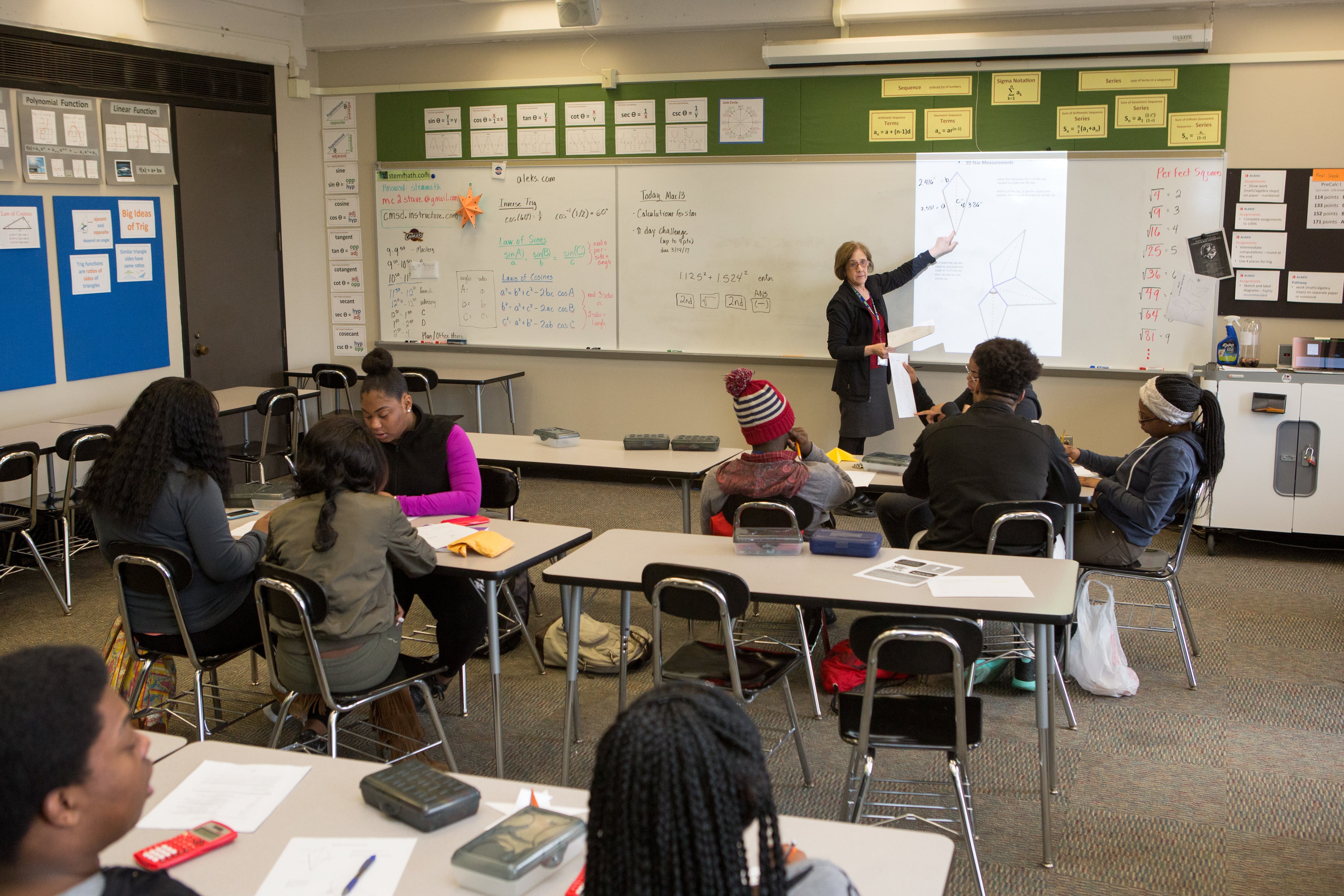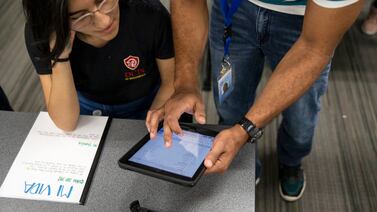In the wake of alarming score drops on the nation’s report card, new research sheds more light on how academic gaps have widened during the pandemic.
Students who were already struggling were hit harder by the initial COVID disruptions and are now rebounding at a slower rate than their highest-achieving peers, according to findings from testing group NWEA.
News of the growing gap between the lowest-performing students and their peers isn’t novel — it’s been documented in past research and showed up in the results of the National Assessment of Educational Progress exams released just last month. But the latest findings solidify a developing picture of schools struggling to support students who have fallen off track.
The findings underscore the need for more resources for educators, researchers say.
“The ceiling stayed pretty consistent to where it was before, but the floor has dropped substantially, and I worry that we’re starting to push teachers beyond their capacity to meet that diversity of needs,” said Karyn Lewis, an NWEA researcher. “So I think this has less implications for what teachers should be doing, but more for what we should be doing as supporters of teachers.”
The widening gap continues a pre-pandemic trend. In the time since, schools have closed and reopened, implemented new policies and learning methods, and dealt with other COVID-fueled issues — all the while some students have seen their families suffer personal or economic losses, while navigating new remote and hybrid learning environments.
NWEA researchers analyzed math and reading test scores from more than 8 million students between third and eighth grade, spanning 24,000 public schools. The research compared the highest- and lowest-achieving 10% of students who were tested during spring 2019 and spring 2022.
Researchers found the broadening gaps between high- and low-achieving students were driven by larger decreases in scores among students who were already struggling. Third grade reading scores, for example, fell by 0.3 points on NWEA’s MAP test for the top 10% of students between spring 2019 and spring 2022. For the bottom 10% of scorers, that drop was 5.2 points.
That trend held consistent across subjects and grades, with the exception of eighth grade math, where higher-achieving students saw larger declines. That exception was consistent with NAEP eighth grade math scores.
Researchers also tracked a group of high- and low-performing students over multiple years, comparing their test score improvements to a pre-pandemic sample. While both sets of students saw diminished gains in the 2020-21 school year — meaning they progressed slower than the pre-pandemic group — the impact was larger among the lowest-achieving students.
And in the 2021-22 school year, the highest-performing students tended to make greater strides than their pre-pandemic counterparts, while in most cases the lowest scorers improved slightly but still lagged behind pre-pandemic growth rates.
“It’s a pretty interesting finding,” said Martin West, a professor of education at Harvard’s Graduate School of Education. “It makes sense that all students would have suffered from the rapid and chaotic initial switch to remote instruction, but over time, families with more resources or school systems with stronger capacity may have found ways to help students catch up more successfully.”
Because the researchers followed a group of students over several years, Lewis said the findings likely represent “the best case scenario.”
“We’re missing out on students that were more mobile and switched districts or dropped out of school or missed testing for some reason,” she said. “So even though what we see here is pretty dramatic, it’s probably a rosier picture than what’s happening in reality.”
And the news isn’t all good for top performers, either. If pre-pandemic national norms are still used, for example, as benchmarks for gifted and talented programs, “You’re going to have fewer students meeting those cutoffs overall, but you’re going to have even fewer students of color meeting those cutoffs, given the pandemic has been uneven in its impact,” Lewis added.
Scott Marion, a testing expert and member of the board that oversees the NAEP tests, noted the pandemic has brought more attention to gaps that were already quite worrisome.
He pointed to recent NAEP results, where average eighth grade math scores dropped 8 points — the largest decline on record. The difference between the highest and lowest performers, however, remained around 100 points.
“It’s not like the gaps weren’t egregious before,” Marion said.






